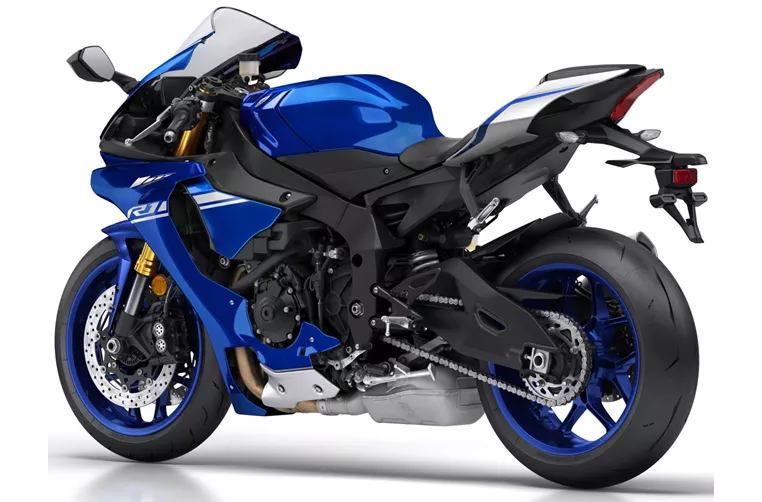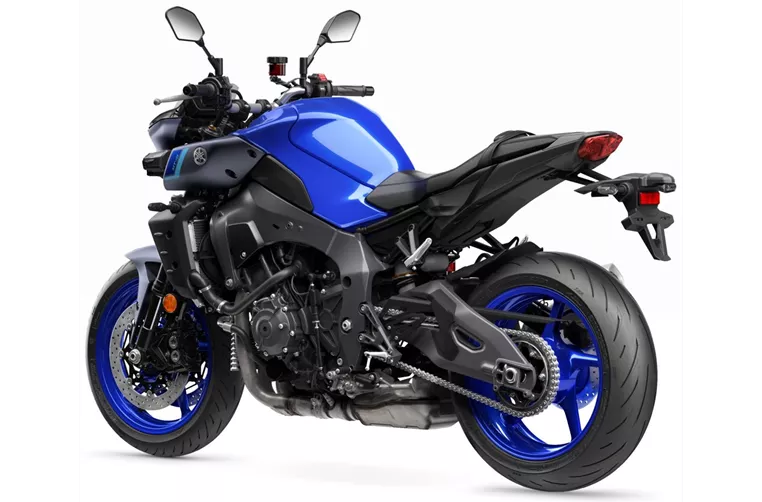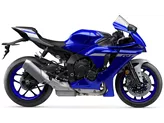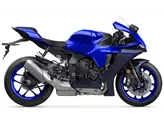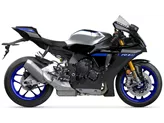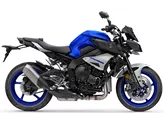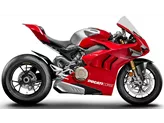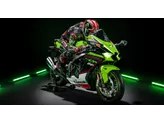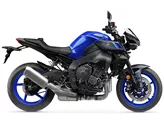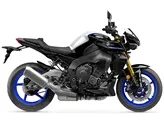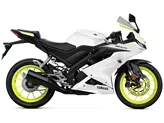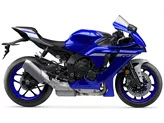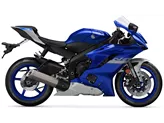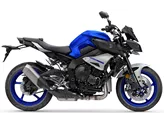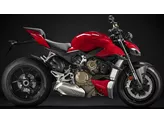Yamaha R1 2019 vs. Yamaha MT-10 2022
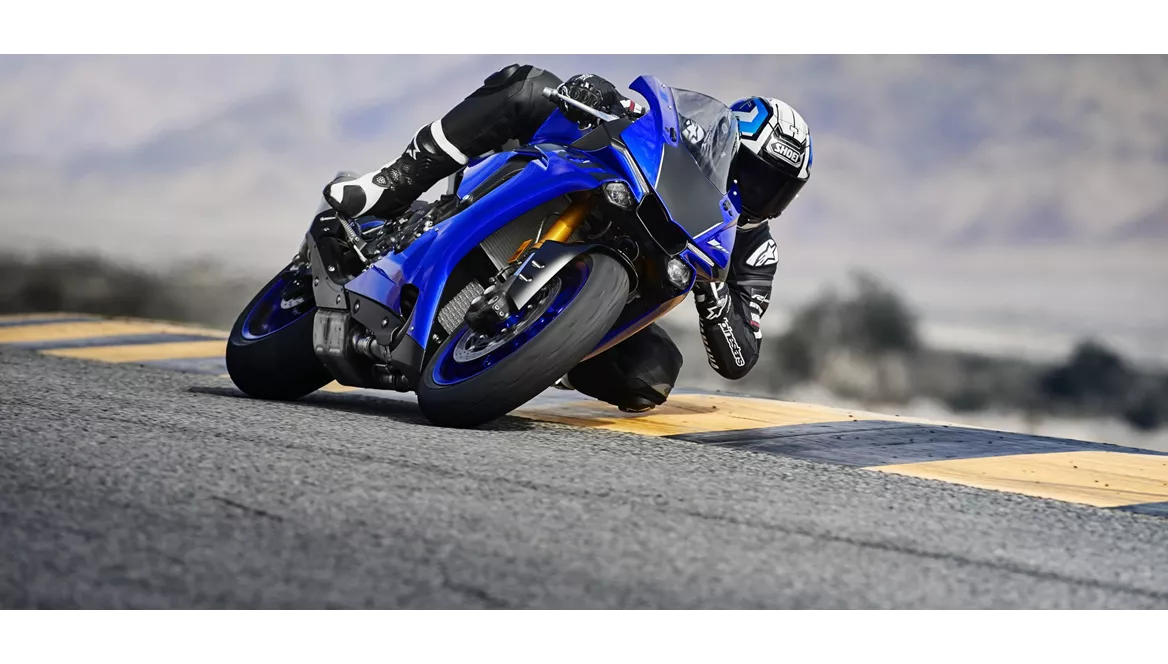
Yamaha R1 2019
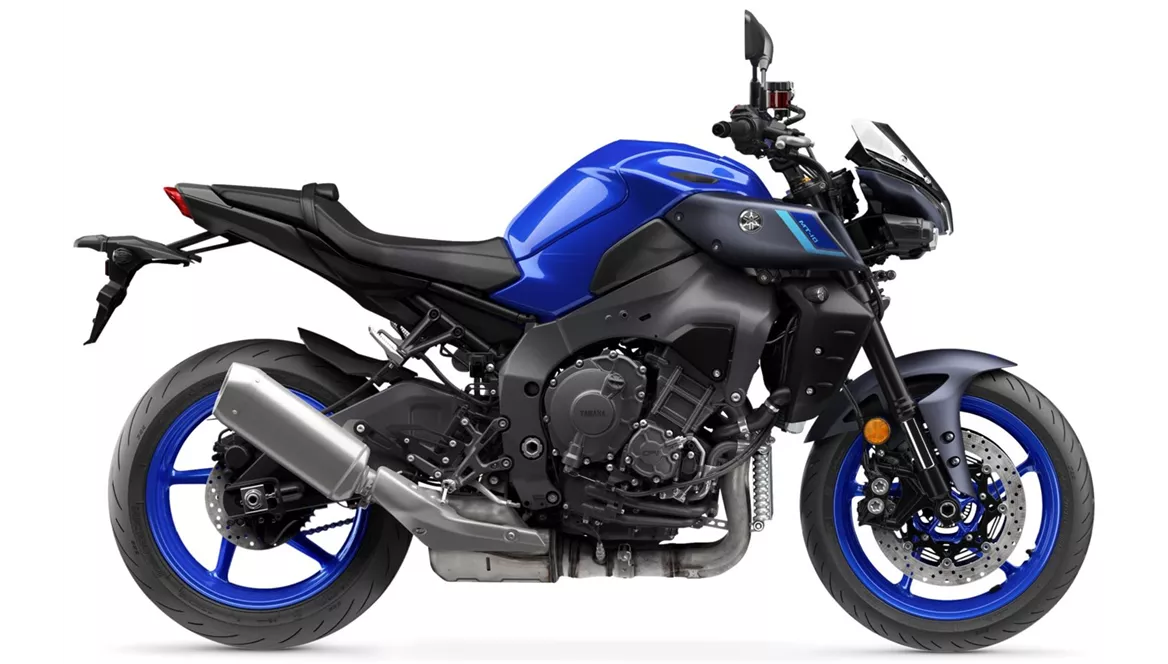
Yamaha MT-10 2022
Overview - Yamaha R1 2019 vs Yamaha MT-10 2022
The Yamaha R1 model year 2019 and the Yamaha MT-10 model year 2022 are both high-performance motorcycles from Yamaha, but they have some notable differences in terms of specifications and features.
Starting with the engine and drive train, both bikes have the same bore and stroke measurements of 79 mm and 50.9 mm, respectively. However, the Yamaha R1 2019 boasts a more powerful engine with 200 HP compared to the 166 HP of the Yamaha MT-10 2022. The torque output is also slightly higher in the Yamaha R1 at 112.4 Nm compared to 112 Nm in the MT-10. Both bikes have a compression ratio of 4 and are equipped with a liquid cooling system.
In terms of suspension, both bikes feature upside-down telescopic forks at the front. The chassis of both bikes is made of aluminum and has a Deltabox frame type, which provides excellent stability and handling.
For braking, both bikes are equipped with double disk brakes at the front. However, the Yamaha MT-10 2022 has additional features such as cornering ABS, which enhances safety during cornering maneuvers.
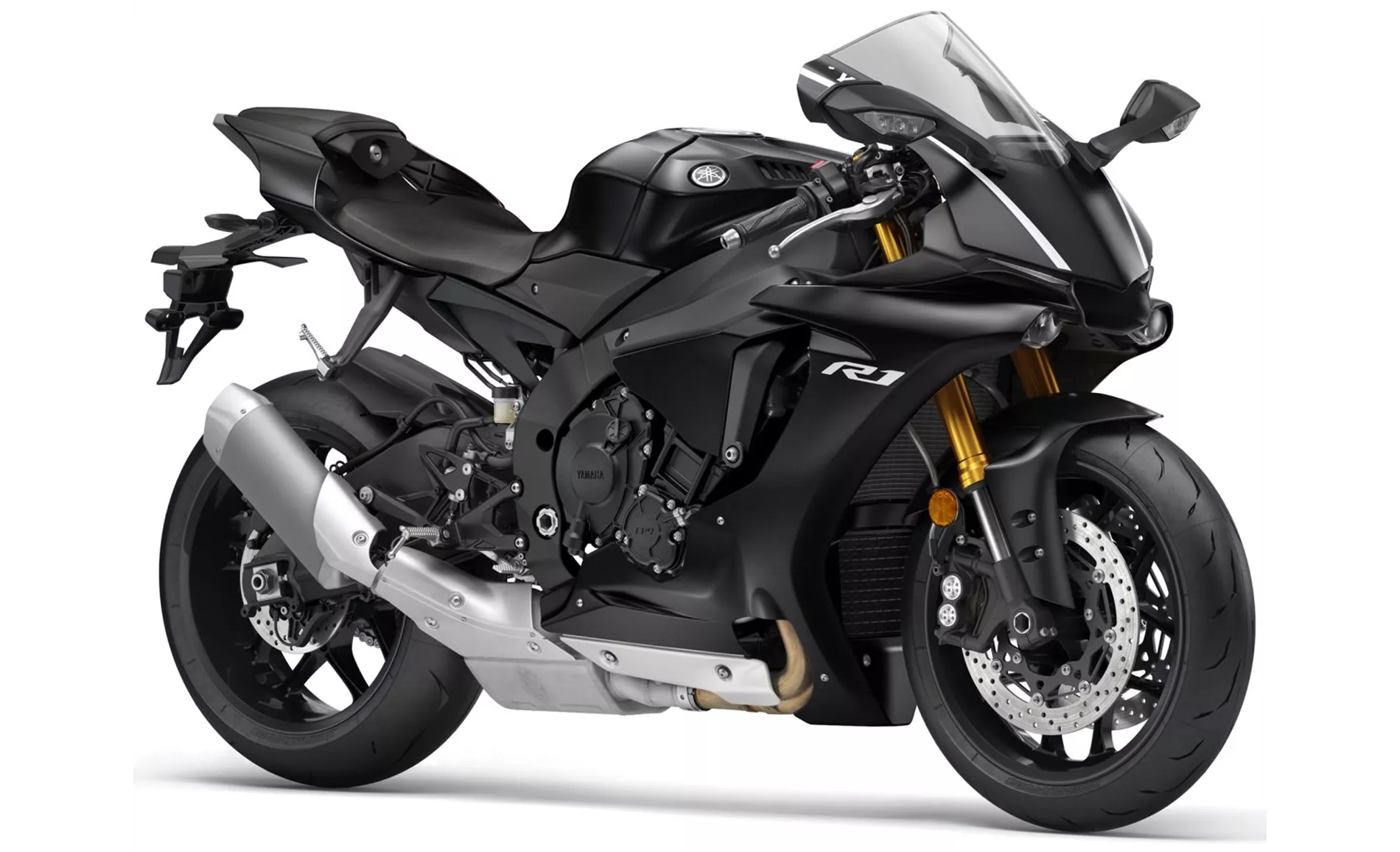
Yamaha R1 2019
In terms of rider assistance systems, the Yamaha R1 2019 comes with launch control and traction control, while the Yamaha MT-10 2022 offers a more comprehensive package. The MT-10 includes ABS, riding modes, cornering ABS, ride by wire, shift assistant with blipper, cruise control, traction control, and anti-wheelie. This makes the MT-10 a more technologically advanced and versatile motorcycle.
Both bikes have the same front and rear tire dimensions, with a width of 120 mm and a diameter of 17 inches. They also share the same wheelbase measurement of 1405 mm. However, there is a slight difference in seat height, with the Yamaha R1 having a seat height of 855 mm compared to 835 mm in the MT-10.
In terms of weight, the Yamaha R1 2019 has a kerb weight of 199 kg with ABS, while the Yamaha MT-10 2022 is slightly heavier at 212 kg with ABS. Both bikes have a fuel tank capacity of 17 liters.
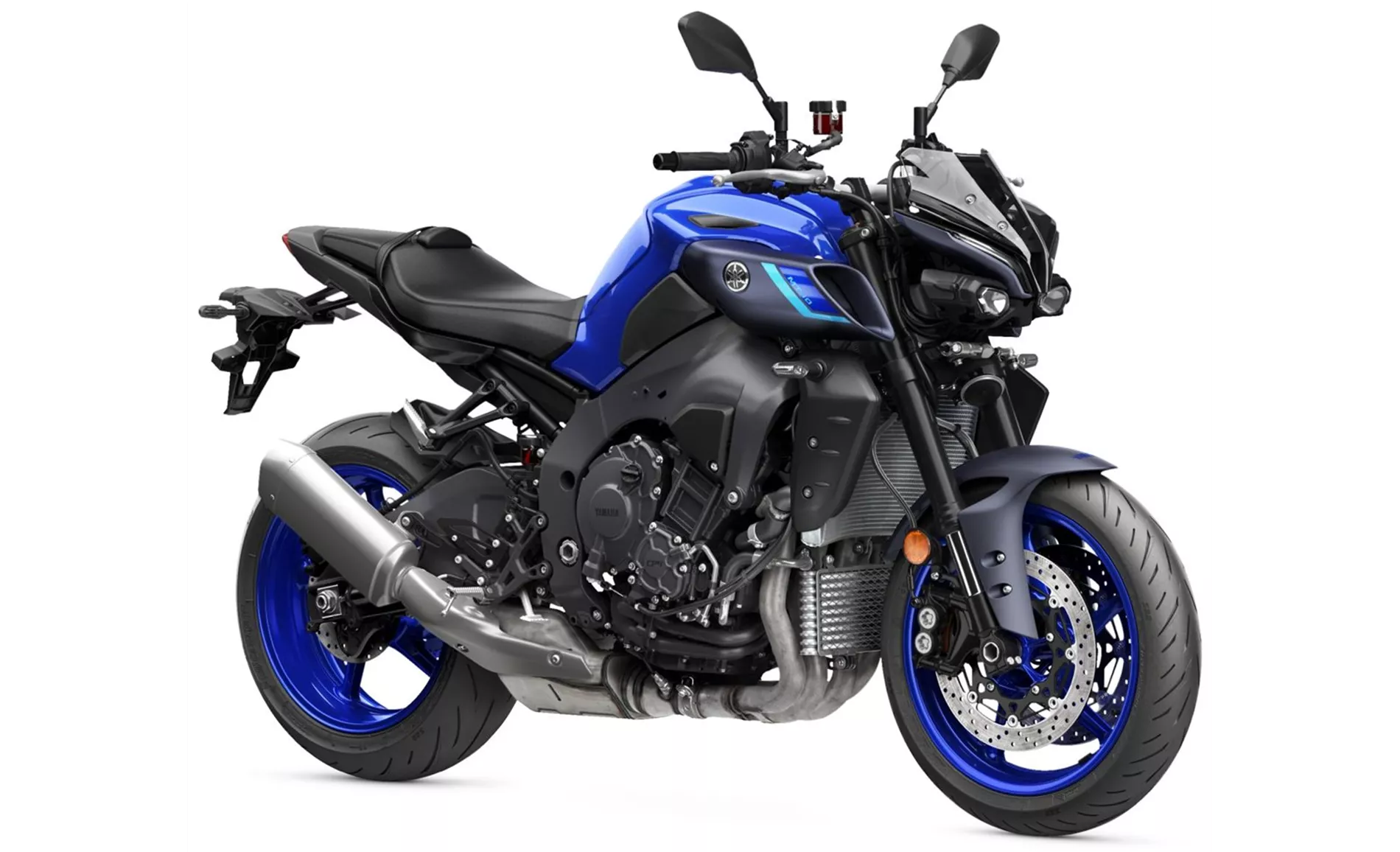
Yamaha MT-10 2022
In terms of strengths, the Yamaha R1 2019 is praised for its powerful engine, clean response, and its performance on the track in the hands of skilled riders. The bike also has a well-tuned electronics system, which enhances its overall performance.
On the other hand, the Yamaha MT-10 2022 is praised for its lovely CP4 engine, great electronics package, and distinctive look. The bike also offers a comfortable seating position and easy-to-read gauges. The inclusion of cornering ABS further enhances the safety and handling of the motorcycle.
However, both bikes have some weaknesses. The Yamaha R1 2019 has been criticized for its ABS system, which is not considered 100% satisfactory. The Yamaha MT-10 2022, on the other hand, has some minor drawbacks such as a non-adjustable clutch lever, lack of steel braided brake hoses, and a somewhat small display.
In conclusion, while both the Yamaha R1 2019 and the Yamaha MT-10 2022 are powerful motorcycles with impressive specifications, the MT-10 offers a more comprehensive package in terms of rider assistance systems and safety features. However, the R1 is still a formidable track bike with its powerful engine and well-tuned electronics. Ultimately, the choice between the two will depend on the rider's preferences and intended use of the motorcycle.
Technical Specifications Yamaha R1 2019 compared to Yamaha MT-10 2022
Pros and Cons in comparison
Pros and Cons in comparison
Yamaha R1 2019

The 2020 R1 model - already available from September - is an evolutionary step that will benefit both the trackday racer and the Yamaha SBK team. The amateur is most likely to benefit from the truly perfect electronics and will also appreciate a little extra power.
Yamaha MT-10 2022
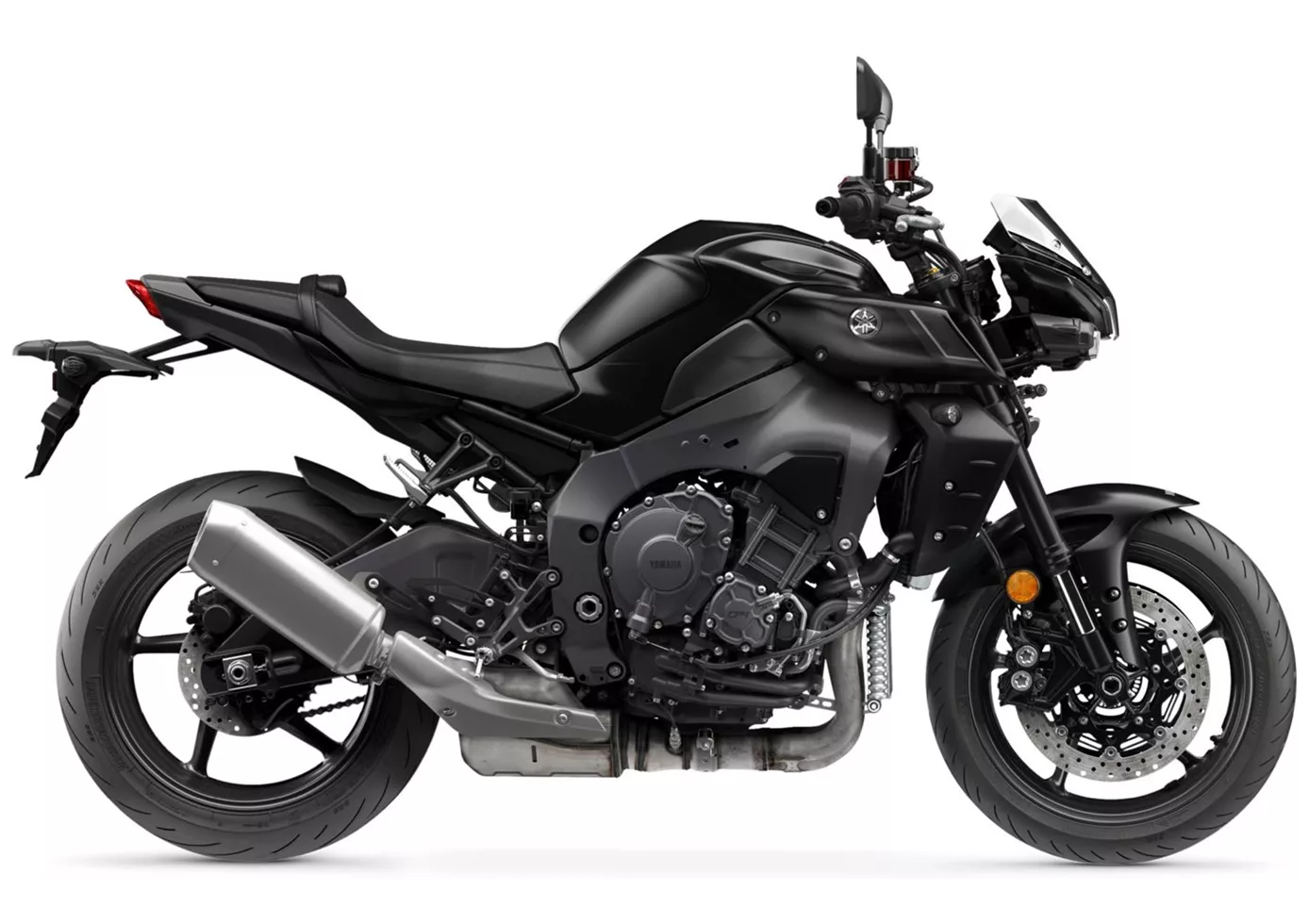
The new MT-10 is a really successful evolution of its predecessor, but remains completely true to its character. The new electronics package with a 6-axis IMU is a blast, all features are so well coordinated and work so well together that the rider is optimally supported by the electronics in every situation without being overbearingly patronised. The rest of the components in the chassis and brakes are completely in order and the Mad Max-Brachialo style look has been toned down a little in direct comparison to the predecessor, but still remains unique and clearly recognisable as an MT-10.
Price Comparison Avarage Market Price Yamaha R1 vs Yamaha MT-10
There are a few key differences between a Yamaha R1 2019 and a Yamaha MT-10 2022. It takes less time to sell a Yamaha R1 with 112 days compared to 151 days for a Yamaha MT-10. Since model year 2005 1000PS.de editors have written 80 reviews for the Yamaha R1 and 32 reviews for the Yamaha MT-10 since model year 2016. The first review for the Yamaha R1 was published on 28/04/2003 and now has more than 3,900 views. This compares to more than 20,700 views for the first review on Yamaha MT-10 published on 17/11/2015.
